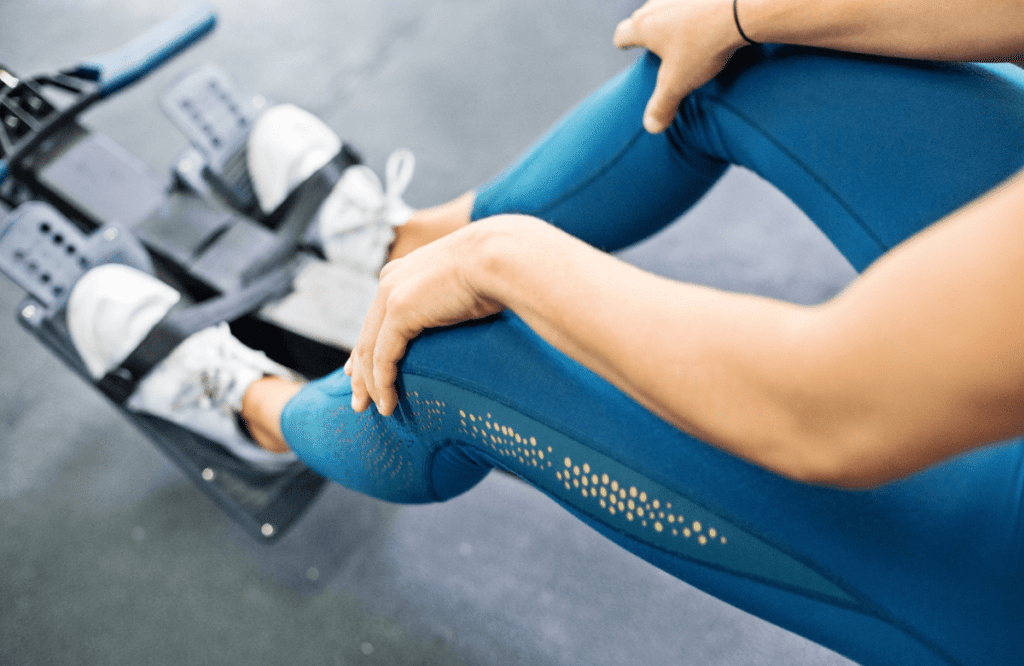The low row is one of the most popular back exercises in the gym. The movement is both simple and effective, which is a winning combo.
With a low row machine you don’t have difficult technique to learn. You can hit the latissimus dorsi well, and it’s a great way to help develop your general back musculature. The neutral position your lift from also means you can go heavy without compromising on form.
As back development options go, it’s one of the very best. There’s a big upside and a very low risk of injury, making it a great option for beginners and experienced lifters alike.
Jump to:
Benefits of the Low Row Machine
Not all exercises are created equal, and that’s especially true when it comes to back training. If you get it wrong, you can cause yourself an injury.
Here’s three of the many benefits of adding the low row to your workouts…
Unilateral movement
Most low row machines allow each side of the body to move independently. This is a huge asset, because it allows balanced strength improvement. When training with a barbell, there’s a tendency for the stronger side to dominate the movement. This leads to strength imbalances and potential injury risk.
There is good quality evidence that rotator cuff strength imbalance leads to increased shoulder injury risk, so training in a way that helps to iron out these imbalances is a good thing.
Horizontal pull – good for shoulders
Thanks to many of us spending a lot of time with internally rotated shoulders (driving, working at a computer, eating etc), we’re likely to develop a tight chest and anterior deltoids. One of the best ways to correct this is with horizontal pulling.
With a horizontal pull, you retract the shoulder blades, which helps to activate and strengthen the trapezius muscles, rhomboid muscles and posterior deltoids. This row movement requires a lot of muscle activation and has both strength and joint health benefits.

Training the back with heavy weights without a loss of form
This is a huge one. As a general rule, the heavier the lifting, the more likely it is that your form will break down. The low row is somewhat protected against this though.
Unlike a free weight exercise like a dumbbell row, the low row has a seat and a chest pad which helps to maintain body position during the exercise. When the weights increase, or fatigue kicks in the seat and chest pad helps to prevent the back moving out of place. This also prevents you from cheating by adjusting the body position. The primary muscles still have to do the work.
Low injury risk
The machine is set up to keep you in an optimal position throughout your lift. The pads keep your back straight. You can’t involve the lower back (a vulnerable area for many), and the arm movement can’t be influenced by rotation to either side.
If your low row machine doesn’t have a seat with a chest pad attached, you’ll have to work harder to maintain the correct position when training.
Useful for beginners and experienced alike
The low row requires very little technique to learn, and is very safe. That makes it a perfect option for beginners. It also means they can train heavy without hurting themselves, meaning they improve strength quickly.
It’s also a great option for experienced lifters, because it allows them to train heavier than they could with exercises such as a bent over row, without risking an injury.

Negatives of the low row
The article wouldn’t be fair and balanced if I didn’t also point out the negatives of the machine as well. Here’s a few points to consider…
Not especially functional
The low row is a great machine body bodybuilding, but it’s not a great functional fitness movement. If you are going to train for sport, there are better ways to do it. Research shows that when it comes to enhancing movements and athleticism, exercise selection is helpful.
A bodybuilding machine like a low row is great for muscle building, but it won’t make you more athletic.
No core engagement
The core muscles are responsible for helping to generate power, good quality movement and back protection. These traits are trained and recruited with free weight exercises, not machines. The low row falls into this category.
It’s difficult to keep your core tight and make the movement a core challenge when the movement is governed almost entirely by a machine.
How to replicate low rows without a machine
You might not have access to a low row, but want to replicate it in your workouts. Here’s a couple of suitable alternatives you can do without a low row…
Close grip cable row
The cable row is a similar exercise to a low row in the sense that it has a horizontal pulling action, and the weight is pulled from a low position. In order to replicate the neutral grip element of the low row, use the ‘v’ handle, or single handles that you can attach close together.
Here’s the movement in action…
Close grip landmine row
This is another close grip row variation. In the landmine row you have more lower back and core engagement, but the fundamentals of the exercise are the same. You still have a neutral grip, and it’s still a horizontal pull.
Here’s the movement in action…
Low Row Form Tips
To get the most from the low row, you need to know how to perform the exercise correctly. This section will teach you the proper position, the correct movement path and how to execute the movement most effectively…
Use a neutral grip
There are plenty of other back/pulling exercises with an overhand or underhand grip. Although there is no ‘correct hand positioning’ for the low row, I ask my personal training clients to use a neutral grip. I find that it offers a nice balance of muscle activation across the back.
Scapular retraction and depression
In order to really activate the back, and keep the shoulder blades in an optimal position during the lift, I like my clients to retract and depress the shoulder blades. This means squeezing them together and pulling them ‘downwards’. Keep this in place throughout the lift.
Don’t arch upper back and drop head forward
One of the most common faults you’ll see when the weight goes up on a low row, is the lifter’s upper back hunch over, and their head pulls down. Resist this movement – instead keep your head up, your upper back braced and don’t let your form break down. If it does, reduce the weight.
Smooth, steady pull throughout
One of the ways to ensure a good lift is to make sure you lift with a smooth, even pull throughout the full range of motion. With seat height set so the chest pad is comfortable, reach out and grab the handles. This is the starting position from which you pull. As you pull, distribute the effort between the back and upper arm muscles.

Programming the low row
The low row is a horizontal pull movement, so it fits in well on a back day, or as a counter balance to too much horizontal pressing or fly exercise.
For the reasons we discussed earlier (to combat internal shoulder rotation and improve rear shoulder strength), I’d encourage you to do a lot of horizontal pulling. This is especially true if you work at a desk, drive a lot or spend a lot of time sitting down. These positions put the shoulders at greater risk of muscle imbalance.
The great thing about the low row is it allows you to lift heavier than you could in lifts such as the bent over row, but without the lower back injury risk. If you have a vulnerable lower back, consider using the low row as your primary heavy horizontal pulling exercise.As with any exercise, as long as you use good form and don’t over-indulge in it, you can perform it safely. Anything from 1-3 times per week, with 3-15 sets, depending on your goals.















